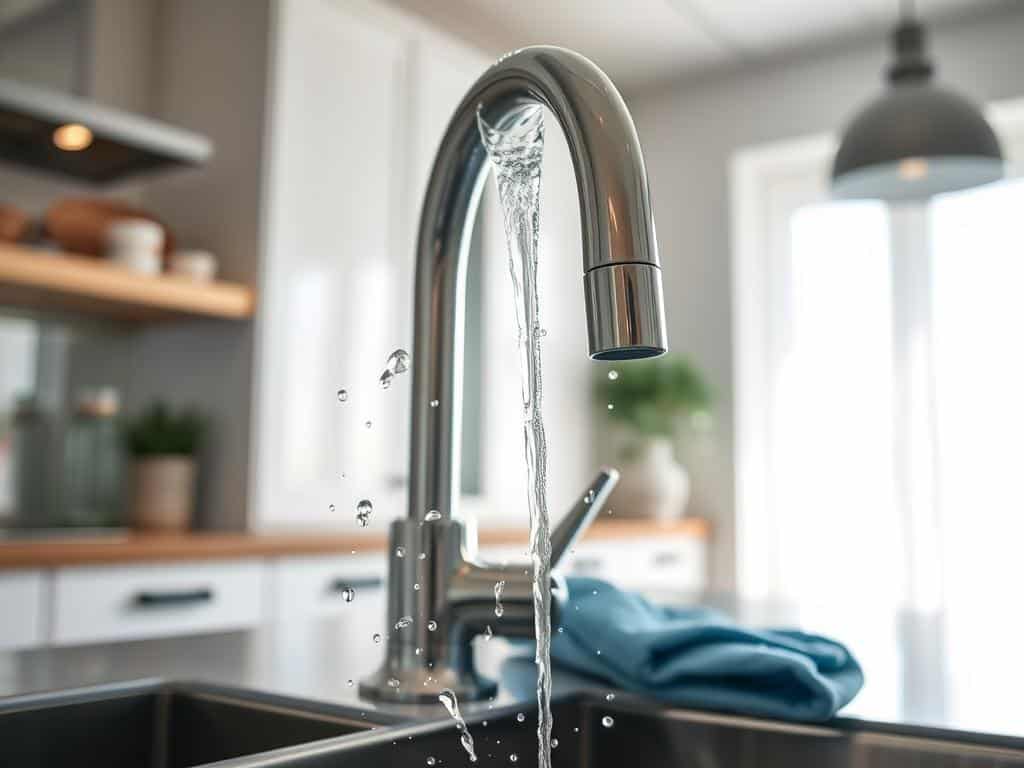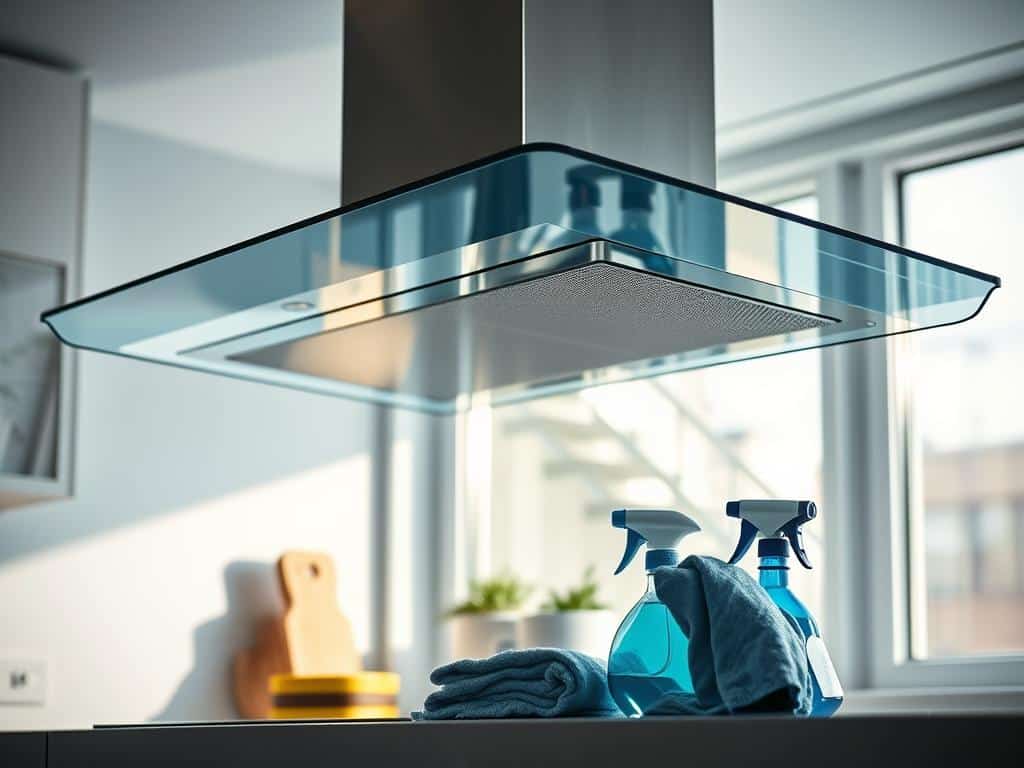
Your kitchen faucet is not just a functional piece of equipment; it’s a focal point in your kitchen that can harbor bacteria, stains, and smudges, while also being prone to mineral buildup from hard water. Proper kitchen faucet maintenance is crucial for preserving not only the visual appeal but also the functionality and water quality. In this guide, experts Jennifer Parnell of Humble Suds and Leanne Stapf of The Cleaning Authority share valuable faucet cleaning tips.
They emphasize the importance of incorporating faucet care into your regular kitchen cleaning routines. Using easily accessible household ingredients such as baking soda and vinegar can achieve remarkable results. However, it’s essential to apply these substances wisely, especially when dealing with sensitive finishes like nickel, gold, or brass.
The longevity and shine of your kitchen faucet can be greatly affected by the materials used. Chrome plating and stainless steel stand out for their durability and ease of cleaning. Regular cleaning is recommended every few months to prevent dirt, debris, and hard water deposits, which can otherwise impair water flow and lead to consequential damage.
Stay tuned as we delve into effective cleaning methods, including the use of vinegar, baking soda, and citric acid, to keep your faucet sparkling clean. By following these practical guidelines, you can ensure your kitchen faucet continues to perform optimally and shine brightly, enhancing both the beauty and hygiene of your kitchen space.
Understanding Different Faucet Materials
Selecting the right faucet finish is crucial not only for aesthetics but also for maintenance and durability. From the timeless shine of chrome faucets to the rugged resilience of stainless steel faucets, each material has its unique characteristics and care requirements.
Chrome Finish
Chrome faucets are celebrated for their bright, reflective surface that adds a polished touch to any kitchen. However, they require regular upkeep to maintain their luster. Chrome is prone to showing water spots and fingerprints, making consistent cleaning a necessity. Additionally, avoid using abrasive cleaning agents as they can scratch the surface.
Stainless Steel
Stainless steel faucets are favored for their unmatched durability and hygienic properties. These faucets are highly resistant to corrosion and less susceptible to scratches, making them an excellent choice for busy kitchens. Regular cleaning with gentle cleansers ensures that stainless steel faucets remain shiny and clean without much hassle.
Other Finishes
Beyond chrome and stainless steel, other faucet finishes include matte black, brass, and oil-rubbed bronze. Matte black faucets are gaining popularity for their modern, sleek look and resistance to scratches and dents. Brass offers a vintage charm, while oil-rubbed bronze provides a rustic appeal. Each of these finishes requires specific care to retain their unique aesthetic qualities, such as avoiding harsh or acidic cleaners that may tarnish the sheen.
Gathering Necessary Cleaning Supplies
To efficiently clean and shine your kitchen faucet, it is essential to gather the right faucet cleaning essentials. By using the appropriate cleaning tools for faucets, you can eliminate hard water stains, bacteria, and grime without causing damage to the material. A few staple items you’ll need include white vinegar, baking soda, and a mild pH-neutral cleaner such as Humble Suds All Purpose Cleaner. These items will help you manage eco-friendly cleaning effectively.
Other necessary cleaning tools for faucets include a soft-bristled toothbrush, plastic bags, rubber bands, and soft microfiber towels. Incorporating these tools into your cleaning routine ensures that you can reach all the nooks and crannies of your faucet, leading to a more thorough clean.
Regular sanitizing significantly reduces bacteria, which studies have shown frequently inhabit faucet handles and sink areas. The recommendation to use methods like soap, steam, and vinegar complements an eco-friendly cleaning approach. For instance, you might use a mixture of water and white to soak faucet components, effectively removing residue and disinfecting surfaces. Ensuring you have these cleaning supplies on hand will make the task more manageable and effective.
Here is a detailed list of supplies and their respective uses for faucet cleaning:
| Supply | Purpose |
|---|---|
| White Vinegar | Disinfecting and removing mineral deposits |
| Baking Soda | Scrubbing away stains and grime |
| Humble Suds All Purpose Cleaner | Gentle, pH-neutral cleaning |
| Soft-bristled Toothbrush | Reaching small crevices |
| Plastic Bags and Rubber Bands | Soaking faucet components |
| Soft Microfiber Towels | Drying and polishing |
Using these faucet cleaning essentials ensures you maintain the faucet’s integrity and aesthetics. Proper preparation and a comprehensive approach to cleaning guarantee that your kitchen faucet remains both functional and visually appealing.
Cleaning Kitchen Faucet with Vinegar
Keeping your kitchen faucet clean and shiny requires the right combination of effective cleaning techniques and protective measures. Cleaning with vinegar is a versatile method, and when applied correctly, it ensures proper faucet sanitation while maintaining the finish.
Protecting Your Faucet Finish
Using vinegar for faucet cleaning must be done with care to avoid damaging sensitive materials. While chrome, stainless steel, and bronze can withstand a vinegar treatment, staying mindful of the exposure time is crucial. Vinegar can be harsh on delicate finishes like gold and brass, thus protective cleaning techniques are recommended. One such technique involves diluting vinegar with water in a 50/50 ratio to minimize potential damage.
Step-by-Step Vinegar Cleaning Process
Follow these steps for an effective and safe vinegar cleaning process:
- Create a solution of equal parts water and vinegar.
- Submerge a cloth or paper towel in the solution and wrap it around the faucet.
- Let it sit for at least 5 to 15 minutes to loosen mineral buildup. For tougher stains, it may be necessary to leave it overnight.
- Gently scrub the faucet with a soft brush, like a toothbrush, to remove any remaining debris.
- Rinse thoroughly with warm water and dry with a soft cloth to prevent water spots.
Precautions for Sensitive Materials
Certain materials require extra caution. For instance, brass faucets should be treated with a paste made from baking soda and vinegar, while bronze faucets benefit from a salt and warm water mix. Here is a concise guide to different faucet finishes:
| Material | Cleaning Method |
|---|---|
| Chrome | 50/50 mix of water and vinegar |
| Stainless Steel | Soap and water |
| Brass | Baking soda and vinegar paste |
| Bronze | Salt and warm water mix |
| Brushed Nickel | Damp cloth wipe down |
| Polished Nickel | Regular maintenance to avoid oxidation |
By adhering to these protective cleaning techniques, you can ensure the longevity and shine of your kitchen faucet, achieving optimal faucet sanitation with every clean. Remember to revisit this process every other month or as needed to maintain a pristine faucet.
Using Baking Soda for a Sparkling Clean
Baking soda is highly recommended for refreshing and cleaning kitchen faucets due to its gentle yet effective abrasive properties. Utilizing baking soda cleaning techniques can help you achieve sparkling faucets, enhancing the overall look and hygiene of your kitchen.

Combining Vinegar and Baking Soda
When combined with vinegar, baking soda offers enhanced cleaning power to tackle tough grime and restore shine, especially for durable materials like stainless steel. This potent duo acts as one of the best natural cleaning solutions. Here’s how you can integrate them:
- Mix equal parts of baking soda and vinegar to create a paste.
- Apply the paste to the faucet, focusing on areas with heavy buildup.
- Let it sit for 5-10 minutes to allow the mixture to break down grime.
- Scrub gently with a toothbrush, ensuring that the mixture penetrates every crevice.
- Rinse thoroughly with warm water and dry with a soft cloth.
Scrubbing with Baking Soda
Applying baking soda directly to the faucet and scrubbing with a toothbrush can lift stains and debris, leaving faucets spotless and gleaming. Here’s a step-by-step approach to using baking soda alone:
- Sprinkle baking soda directly onto a damp toothbrush or soft cloth.
- Gently scrub the faucet surface, paying special attention to areas prone to grime buildup.
- For stubborn stains, let the baking soda sit for a few minutes before scrubbing.
- Rinse the faucet with warm water to remove any residue.
- Dry the faucet thoroughly to prevent water spots and restore the shine.
Removing Hard Water Stains
Dealing with hard water stains on your kitchen faucet is a common challenge. These unsightly stains can affect the look and functionality of your faucet, making appropriate hard water solutions crucial for maintaining a pristine kitchen. In this section, we explore effective methods for faucet stain removal, focusing on natural and commercial options.
Citric Acid Method
One powerful hard water solution involves using citric acid cleaning. Citric acid is an effective natural cleaner that can break down stubborn mineral deposits. To use this method:
- Combine equal parts citric acid and boiling water.
- Allow the mixture to cool slightly, then apply it to the stained areas.
- Let it sit for about 15 minutes to break down the deposits.
- Scrub gently with a sponge or microfiber towel and rinse thoroughly.
Repeat this process as necessary to fully remove the stains. Incorporating citric acid cleaning regularly prevents build-up and keeps your faucet shining.
Using a Commercial Cleaner
For those who prefer a ready-made option, commercial cleaners specifically designed for hard water solutions can be highly effective. These products are formulated to tackle mineral deposits without damaging your faucet’s finish. When using a commercial cleaner, ensure to:
- Read and follow the manufacturer’s instructions carefully, paying close attention to material compatibility and contact times.
- Apply the cleaner to the stained areas and allow it to sit as directed.
- Scrub gently with a sponge or brush, then rinse thoroughly to remove any cleaner residue.
Consistent use of commercial hard water solutions can help in maintaining your faucet’s appearance and extending its lifespan. For more tips, visit this informative guide on hard water stain removal.
Cleaning the Faucet Aerator
Ensuring proper faucet aerator maintenance is essential for maintaining optimal water flow and preventing mineral buildup. Most kitchen and bathroom faucets come equipped with aerators, which play a critical role in controlling water pressure, preventing splashes, and filtering debris.
Importance of Cleaning the Aerator
Regular aerator care is crucial because a clogged aerator can lead to decreased water flow and erratic streams. This maintenance task should be performed at least twice a year, or more frequently if there’s ongoing plumbing work. Failing to clean a broken or severely worn aerator can exacerbate issues, although new aerators are relatively inexpensive.
Steps to Clean the Aerator
To achieve effective unclogging aerators, follow these steps:
- Unscrew the aerator using channel-lock pliers or an aerator key. Masking tape can help protect the finish from scratches.
- Disassemble the aerator carefully, noting the order of the parts, which typically include a tiny screen, a rubber washer, a mixer disc, a flow restrictor, and an inner plastic housing.
- Soak the parts in vinegar for 20 to 30 minutes. For stubborn deposits, soaking overnight is ideal to soften residues.
- Use a toothbrush or a small brush to scrub away any remaining buildup. A sewing needle or toothpick can help clear out tiny holes.
- Rinse all parts thoroughly with clean water.
Reassembling the Aerator
After cleaning, proper reassembly is key to restore functionality. Reassemble the parts in the correct order, ensuring a snug fit. If water streams over the outside of the aerator after reassembly, tighten it further with the pliers. To avoid damage, handle plastic aerators carefully and tighten gently.
By adhering to these faucet aerator maintenance steps, you can regularly enjoy a consistent, straight water stream while conserving water and improving overall water service quality. Remember that an aerator leaking or not functioning properly might require additional inspection or replacement.
Maintaining Your Faucet’s Shine
To sustain your kitchen faucet’s shine and ensure its longevity, incorporating faucet upkeep into your weekly routine is essential. Regular cleaning and faucet polishing practices will help maintain the faucet’s natural luster while preventing corrosion and stains. Here are some valuable tips and techniques to achieve outstanding results.
Regular Cleaning Tips
For effective faucet upkeep, start with a damp, soft cloth and mild liquid dishwashing soap to preserve the faucet’s finish. Frequently cleaning with these materials eliminates dirt, grime, and fingerprints, which can alter the faucet’s appearance over time. Avoid abrasive scrubbers or pads as they can scratch and scuff the surface.
Hard water contains high levels of calcium and minerals that can deposit on faucets. Using a 50/50 solution of water and vinegar helps clean hard water deposits without inflicting damage. Soak parts such as aerators in white vinegar overnight to remove stubborn deposits effectively.
Polishing Techniques
Engaging in regular faucet polishing practices ensures a long-lasting shine. Each faucet finish has unique requirements; for example, stainless steel and chrome require different treatments compared to brass or bronze finishes. Utilize non-abrasive wax for polishing specific finishes to avoid wear and tear.
For removing water spots, a blend of household vinegar and water or 0000 grade steel wool can be used. Follow these steps:
- Apply the solution using a soft, lint-free cloth.
- Buff the faucet gently to remove spots without scratching the surface.
- Rinse thoroughly with water to ensure no residue remains.
Incorporating these faucet upkeep strategies will help in maintaining faucet shine and enhance its appearance for years to come.
Conclusion
Successfully maintaining and cleaning your kitchen faucet is not merely about enhancing its aesthetic appeal but also preserving its functionality and longevity. By following a comprehensive kitchen faucet care guide, you ensure the safety of your household by eliminating bacteria that can accumulate over time. Knowing the material of your faucet is fundamental as it influences your choice of cleaning supplies, from vinegar and baking soda to citric acid solutions, all of which effectively banish grime and tackle hard water stains.
The faucet cleaning summary highlights essential practices such as routinely cleaning the aerator to sustain optimal water pressure and consistent spray patterns. Regularly addressing mineral buildup, especially in areas with hard water, is crucial for preventing any reduction in performance. Utilizing tools like a toothbrush and microfiber towel can make cleaning meticulous areas, such as faucet handles, more effective.
Incorporating routine checks and proper maintenance into your cleaning regimen will help you avert issues like corrosion, leaks, and other costly repairs. Whether using sleek, durable stainless steel or choosing a stylish model from brands like ANZZI, ensuring your faucet is clean and well-maintained enhances both its efficiency and lifespan. Adopting these practices means your faucet will continually shine as a functional centerpiece in your kitchen, aligning fully with the kitchen faucet care guide for long-lasting utility and appeal.



